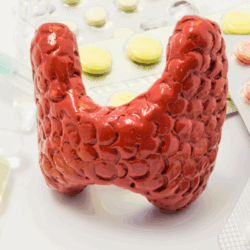True health optimization isn’t just about addressing current symptoms; it’s about building a foundation for long-term vitality and performance. The goal is to extend your peak years, maintaining the energy and mental clarity needed to lead in your field and live fully. A key pillar of this longevity strategy is metabolic health. Modern advancements have produced powerful tools to support this, including tirzepatide glp 1, which has demonstrated significant effects on both weight and glycemic control. This article explores how this medication works and why it’s being seen as a valuable component in proactive health plans designed to enhance resilience, sharpen cognitive function, and support your body for decades to come.
Tirzepatide, marketed as Mounjaro, is a groundbreaking medication that has garnered significant attention for its dual-action mechanism in managing type 2 diabetes and promoting weight loss. By simultaneously targeting the glucagon-like peptide-1 (GLP-1) and glucose-dependent insulinotropic polypeptide (GIP) receptors, Tirzepatide offers a novel approach to metabolic health. This article delves into its mechanisms, clinical efficacy, dosing strategies, benefits, risks, and emerging research, providing a comprehensive overview of this innovative therapy.
How Does Tirzepatide GLP-1 Actually Work?
Tirzepatide distinguishes itself by acting as a dual agonist, engaging both GLP-1 and GIP receptors. GLP-1 agonists are known to enhance insulin secretion, suppress glucagon release, slow gastric emptying, and promote satiety. GIP, another incretin hormone, also stimulates insulin secretion and has been shown to influence lipid metabolism. Tirzepatide amplifies these effects by activating both pathways, leading to improved glycemic control and significant weight reduction. (Carbiab)
What the Clinical Trials Say About Tirzepatide
Clinical trials have demonstrated Tirzepatide’s superior efficacy in managing blood glucose levels and facilitating weight loss. In the SURPASS-2 trial, Tirzepatide participants experienced substantial reductions in HbA1c levels and body weight compared to those treated with semaglutide. Notably, higher doses of Tirzepatide were associated with more significant weight loss, with some individuals achieving reductions exceeding 20% of their baseline body weight. (JAMA Network)
Blood Sugar Control
Tirzepatide’s impact on blood sugar is particularly noteworthy, especially for anyone dealing with energy spikes and crashes that disrupt a demanding day. The primary measure for long-term blood sugar is HbA1c, and studies show Tirzepatide can lower these levels by 1.24% to 2.58%. This is a significant drop from a single medication. For driven professionals, stable blood sugar translates directly to more consistent energy, sharper focus, and less brain fog. More importantly, a large portion of trial participants—between 23% and 62.4%—achieved an HbA1c level below 5.7%, which is considered the normal range. This level of glycemic control is fundamental for long-term health and maintaining peak cognitive performance.
Weight Loss Results
Beyond managing blood sugar, Tirzepatide has produced impressive weight loss outcomes. In clinical trials, participants lost between 12 and 26 pounds on average. Even more telling is that a substantial number of individuals—from 20.7% to 68.4%—lost more than 10% of their initial body weight. This is a critical milestone, as even a modest reduction in body weight can lead to significant improvements in blood pressure, cholesterol, and joint pain. These results highlight the medication’s power, but they also show what’s possible within a structured approach. At 1st Optimal, we find that powerful tools like Tirzepatide deliver the most sustainable results when integrated into a medically guided weight loss program that addresses your complete health profile, from hormones to lifestyle.
Finding Your Ideal Tirzepatide Dosage
Tirzepatide is administered via subcutaneous injection once weekly. The recommended starting dose is 2.5 mg weekly for the first four weeks to assess tolerability. Subsequently, based on individual glycemic response and tolerability, the dose can be increased in 2.5 mg increments every four weeks up to 15 mg per week. This gradual titration helps minimize gastrointestinal side effects commonly associated with incretin-based therapies.
The Other Health Benefits of Tirzepatide
Beyond its primary role in diabetes management, Tirzepatide offers several additional benefits:
- Weight Loss: Significant reductions in body weight have been observed, making it a valuable option for individuals with obesity. (Lilly Investors)
- Cardiovascular Health: Emerging data suggest potential improvements in cardiovascular outcomes, including reductions in major adverse cardiovascular events. (Lilly Investors)
- Lipid Profile Improvement: Studies indicate favorable effects on lipid parameters, contributing to overall metabolic health. (Cardiab)
Tirzepatide Side Effects: What to Expect
While Tirzepatide is generally well-tolerated, some individuals may experience side effects:
- Gastrointestinal Issues: Nausea, vomiting, and diarrhea are the most commonly reported adverse effects, particularly during the dose-escalation phase.
- Hypoglycemia: When combined with insulin or insulin secretagogues, there is an increased risk of hypoglycemia, necessitating careful monitoring.
- Pancreatitis: Although rare, cases of pancreatitis have been reported; patients should be advised to seek medical attention if they experience severe abdominal pain.
Important Safety Information and Contraindications
While Tirzepatide offers significant benefits, it’s not a one-size-fits-all solution. Your safety is the top priority, and understanding who should and shouldn’t use this medication is the first step. Before starting any new treatment, a thorough medical evaluation is essential to ensure it’s the right fit for your unique health profile and goals. This involves a comprehensive review of your medical history, current health status, and any other medications you’re taking. At 1st Optimal, our process begins with in-depth lab testing to create a complete picture of your health, ensuring every recommendation is made with your well-being in mind. This foundational step helps identify any potential contraindications before a prescription is even considered.
Who Should Not Use Tirzepatide?
Tirzepatide is not suitable for everyone. According to the Mayo Clinic, you should not use this medication if you have a personal or family history of medullary thyroid carcinoma (a type of thyroid cancer) or if you have an endocrine system condition called Multiple Endocrine Neoplasia syndrome type 2 (MEN 2). It’s also contraindicated for individuals with a known history of severe stomach problems, such as gastroparesis (delayed stomach emptying), as Tirzepatide can worsen this condition. A detailed conversation with your doctor is critical to review these factors and determine if this treatment is safe for you.
Serious Potential Side Effects
Being aware of potential side effects allows you to be an active partner in your health journey. While most people tolerate Tirzepatide well, serious side effects can occur. It’s important to watch for symptoms of pancreatitis (severe, persistent stomach pain), gallbladder problems (pain in your upper stomach, fever, yellowing of skin or eyes), or any changes in your vision, especially if you have diabetic retinopathy. Other serious risks include the potential for thyroid tumors, severe allergic reactions, and kidney injury from dehydration. Discussing these possibilities with your medical provider ensures you know what to look for and when to seek immediate medical attention.
Pregnancy, Breastfeeding, and Drug Interactions
If you are pregnant, planning to become pregnant, or breastfeeding, Tirzepatide is not recommended, as it may harm an unborn baby. It’s crucial to inform your doctor right away if you become pregnant while using this medication. Additionally, Tirzepatide can slow down stomach emptying, which may affect how other oral medications are absorbed into your body. Be sure to provide your doctor with a complete list of all medications you take, including over-the-counter drugs and supplements, to prevent any potentially harmful interactions and ensure all your treatments work together effectively.
How to Use Tirzepatide Correctly
Properly using your medication is key to achieving the best results while minimizing risks. Tirzepatide is designed for simple, at-home administration, but following the correct procedures for injection, storage, and dosing is essential for its effectiveness and your safety. Your medical team should provide clear instructions, but it’s always helpful to have a reference. Think of this as building a routine—once you get the hang of it, it becomes a seamless part of your week. Following a structured, medically guided plan ensures you are using the medication exactly as intended for your specific needs, which is a core principle of the personalized programs we design at 1st Optimal.
Administration and Storage
Tirzepatide is given as a subcutaneous injection, meaning it goes into the fatty tissue just under the skin. The most common injection sites are your stomach area (abdomen), thighs, or the back of your upper arms. To prevent skin irritation and ensure proper absorption, you should rotate the injection site with each weekly dose. For example, if you used your right thigh one week, you might choose your abdomen or left thigh the next. This simple practice helps maintain skin health and makes the process more comfortable over time.
Proper Injection Technique
For your safety and to prevent infection, always use a new, sterile needle for each injection. The medication typically comes in a pen device that is designed for single use or has single-use, disposable needles. Reusing needles can introduce bacteria, cause unnecessary pain, and may even damage the pen. Following this rule is a non-negotiable part of using injectable medications safely.
Storing Your Medication
Proper storage is critical to maintaining the medication’s stability and effectiveness. You should store your Tirzepatide pens in the refrigerator, but be careful not to freeze them. If a pen freezes, it should not be used. If needed, you can keep a pen at room temperature for up to 21 days. However, once a pen has been stored at room temperature, do not put it back in the fridge. Always check the expiration date before use.
Managing Your Dosing Schedule
Tirzepatide treatment follows a gradual dose-increase schedule to help your body adjust and to minimize potential side effects. Typically, you’ll start with a 2.5 mg dose once a week for the first four weeks. After that, your doctor will assess your progress and tolerance before increasing the dose. The dose can be raised in 2.5 mg increments every four weeks, with a maximum dose of 15 mg once a week. This careful, step-by-step approach allows your provider to find the most effective dose for you with the fewest side effects.
What to Do If You Miss a Dose
Life happens, and you might occasionally forget a dose. If you miss a dose, take it as soon as you remember, as long as it’s within four days (96 hours) of the scheduled day. If more than four days have passed, simply skip the missed dose and take your next dose on your regularly scheduled day. Do not take two doses at once to make up for a missed one.
The Risks of Compounded and Unapproved Tirzepatide
The success of GLP-1 medications like Tirzepatide has unfortunately led to the rise of unapproved and compounded versions. While they might seem like a convenient or cheaper alternative, especially during times of high demand, these products carry significant risks. They are not regulated with the same rigor as FDA-approved medications, meaning their safety, purity, and effectiveness are not guaranteed. Making informed decisions about where your medication comes from is just as important as the medication itself. Sourcing prescriptions from a reputable medical provider ensures you receive a legitimate, safe, and effective product that you can trust.
FDA Warnings on Unsafe Formulations
The U.S. Food and Drug Administration (FDA) has issued explicit warnings about the potential dangers of using unapproved versions of GLP-1 drugs. According to the FDA, these compounded products may use different active ingredients or contain impurities that could be harmful. Because they haven’t undergone the FDA’s strict testing for safety and efficacy, there’s no way to know if they work or what health risks they might pose. To protect your health, it is vital to only use medications that are prescribed by a licensed provider and dispensed from a state-licensed pharmacy.
Understanding Tirzepatide Availability and Shortages
You may have heard about shortages of GLP-1 medications in the past. High demand occasionally outpaced the supply, which created a market for unregulated, compounded alternatives. However, the manufacturer of Tirzepatide has since increased production, and as of early 2024, the FDA no longer lists the drug on its official shortage list. With the approved medication now more readily available, there is even less reason to consider risky, unverified sources. Working with a telehealth platform like 1st Optimal ensures you have access to a stable supply of authentic, FDA-approved medication without having to resort to questionable alternatives.
Tirzepatide vs. Semaglutide: Which Is Better?
Tirzepatide and semaglutide are GLP-1 receptor agonists, but Tirzepatide’s dual agonism offers distinct advantages. Clinical trials have shown that Tirzepatide leads to greater HbA1c and body weight reductions compared to semaglutide. However, individual responses may vary, and considerations such as side effect profiles, cost, and patient preferences should guide therapy selection. (JAMA Network)
What’s Next for Tirzepatide Research?
Ongoing studies are exploring Tirzepatide’s potential benefits beyond diabetes and weight management. Research is investigating its effects on non-alcoholic steatohepatitis (NASH), cardiovascular outcomes, and its role in reducing the risk of developing type 2 diabetes in individuals with prediabetes. These studies aim to expand the therapeutic applications of Tirzepatide, potentially offering broader benefits for metabolic health. (Lilly Investors)
Is Tirzepatide Right for You?
Tirzepatide represents a significant advancement in the treatment of type 2 diabetes and obesity. Its dual-action mechanism provides enhanced glycemic control and substantial weight loss, addressing two critical aspects of metabolic health. Tirzepatide may offer broader therapeutic benefits as research unfolds, solidifying its role in modern medical practice.
Get Medically Guided Support at 1st Optimal
At 1st Optimal, we understand that health optimization is a journey. Our team of experienced medical providers can guide you through the process of understanding your hormone levels and creating a personalized plan tailored to your needs. Schedule a free consultation with the 1st Optimal Care Team and take the first step toward achieving better hormonal balance and improved body composition.
If you’re ready to take the next step toward optimal health, we’re here to help. Contact us to schedule an appointment or learn more about our services:
- Email: membersupport@1stoptimal.com
- Phone: (816) 744-6814
- Online Booking: 1st Optimal Booking Link
Frequently Asked Questions
Is Tirzepatide just another quick-fix weight loss drug? Not at all. While its effect on weight is impressive, we see it as a powerful tool for comprehensive metabolic health. Its primary function is to improve how your body manages blood sugar, which is the foundation for stable energy, mental clarity, and long-term performance. For the high-achieving people we work with, the goal isn’t just a number on the scale; it’s about building a resilient system that supports their demanding lifestyle for years to come. This medication helps reset that system, making it a strategic part of a larger health optimization plan.
How is taking Tirzepatide with 1st Optimal different from getting a prescription elsewhere? Getting a prescription is the easy part; using it to create lasting change is where the real work begins. Our approach is fundamentally different because we don’t just write a prescription. We start with comprehensive lab testing to understand your entire biological landscape—from hormones to gut health to nutrient levels. The medication is then integrated into a personalized program that includes nutritional guidance, lifestyle adjustments, and continuous medical support. We partner with you to ensure the treatment is effective, side effects are managed, and the results are sustainable.
Will I have to stay on this medication for the rest of my life? The duration of treatment is unique to each person and their goals. Some individuals may use Tirzepatide for a specific period to achieve a health milestone, like significant weight loss or reversing insulin resistance, while using that time to build sustainable lifestyle habits. Others may find that a lower maintenance dose is a valuable part of their long-term health strategy. Our goal is to use it as a catalyst for change, and we work with you to create a long-term plan that feels right for your body and your life.
I’ve heard the side effects can be intense. What’s the reality? It’s true that the most common side effects, like nausea, are gastrointestinal. However, these are most often experienced when starting the medication or increasing the dose. This is precisely why a medically guided approach is so important. We use a very gradual dose-increase schedule specifically designed to help your body adapt and to minimize discomfort. Having a dedicated care team to check in with allows for real-time adjustments, ensuring your experience is as smooth as possible.
Why is it so important to avoid compounded or unapproved versions of Tirzepatide? Your health is your most valuable asset, and this is not the place to cut corners. FDA-approved medications have undergone rigorous testing to verify their safety, purity, and dosage accuracy. Unapproved, compounded versions don’t have any of that oversight. You have no way of knowing what active ingredients are actually in the product, if they are contaminated, or if the dose is correct. Sourcing your medication through a reputable medical provider like 1st Optimal ensures you receive the authentic, effective, and safe product you expect.
Key Takeaways
- Tirzepatide uses a dual-action mechanism for greater impact: By targeting both GLP-1 and GIP receptors, it effectively addresses weight and blood sugar, two critical factors for maintaining your energy and focus.
- This medication is a tool, not a magic bullet: To achieve sustainable results and minimize side effects, Tirzepatide must be used within a medically supervised plan that includes gradual dosing, proper injection technique, and a comprehensive health strategy.
- Prioritize safety by avoiding unapproved sources: The FDA warns against compounded or unregulated versions of Tirzepatide due to risks of contamination and unknown ingredients. Ensure your prescription is from a licensed provider and a legitimate pharmacy to protect your health.






